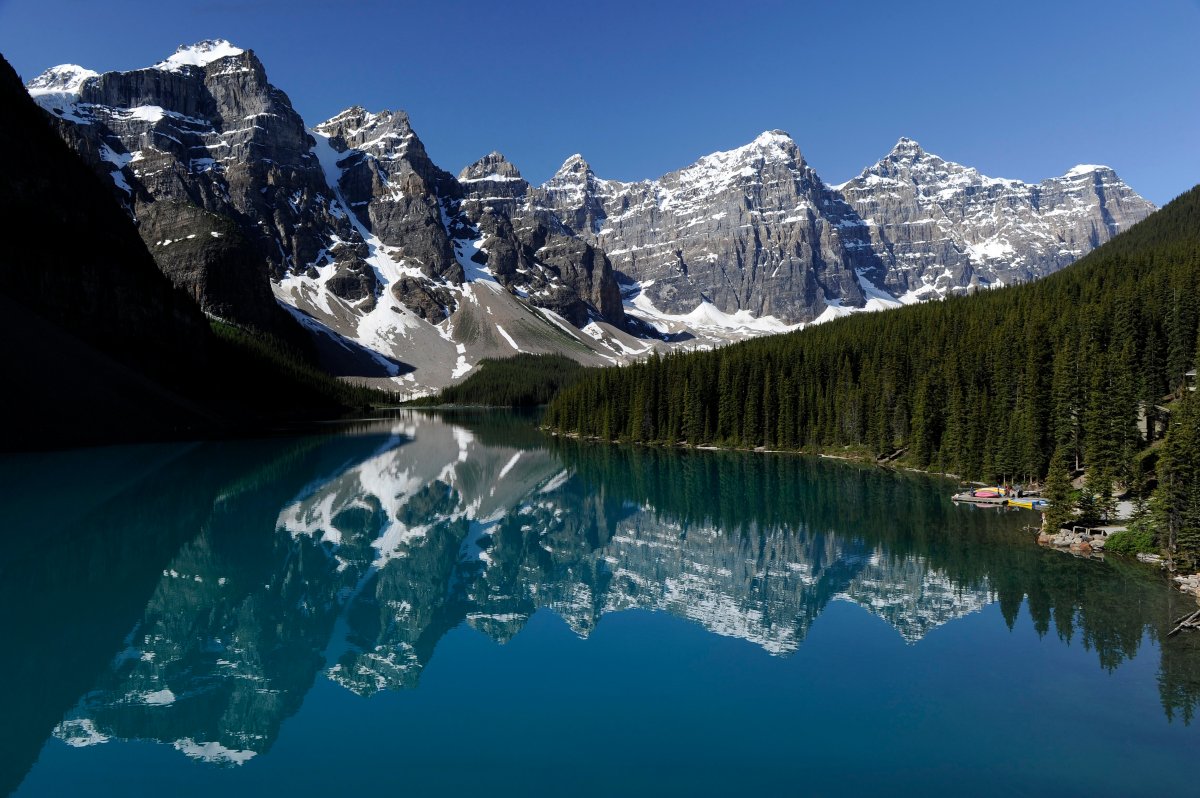Water figures prominently in the world’s imagination of Canada.

Tourism videos advertising the Great White North often feature flyovers of vast, pristine lakes beneath mountains, the sun glinting off their surfaces.
But these images, while stunning, mask a grimmer truth, according to WWF Canada: that the country’s freshwater sources are facing serious risks from factors such as pollution, climate change and industrial activity.
It’s a finding contained in WWF’s Watershed Report, which evaluates the health of Canadian water sources for which data is available.
And it comes as Toronto is set to play host to the 2017 Canadian Water Summit, taking place on June 22, which will bring together professionals connected to the water industry to look at how best to manage the resource through technology, finance, government policy and much more.
WWF Canada’s report evaluated the health of Canada’s 25 watersheds, which are pockets of land where water collects. In this report, those pockets were divided into 167 smaller units, known as “sub-watersheds.”
In evaluating the health of sub-watersheds, the organization looked at factors such as water flow, climate change, habitat loss and invasive species.
One of the most prominent themes in the report was a lack of data: there wasn’t enough to evaluate the health of most of the 167 sub-watersheds.
But where there was enough data, WWF Canada found that the country’s freshwater ecosystems are “under tremendous stress.”
READ MORE: Canada must start linking water, energy issues: scientist
WWF Canada found that 42 out of the 67 sub-watersheds for which it had data had “poor or fair” water quality.
“In some areas, water quality is undermined by agricultural contaminants such as phosphorus and nitrogen,” it said.
“Elsewhere, quality is affected by metals like aluminum or iron, either naturally present or introduced through mining and industry.”
The map below shows water quality measures for 67 sub-watersheds across Canada:

The report also looked at how climate change has affected sub-watersheds.
WWF Canada found that all but 41 sub-watersheds out of 167 have seen moderate or high impacts from climate change.
“Even small shifts in temperature and the precipitation that replenishes rivers can have a large impact on ecosystem dynamics, including change in water levels and rate of flow,” the report said.
This map shows the varying effects of climate change on Canadian sub-watersheds:
The report also included a section on “stressors,” which accounted for all of the seven threats to the health of watersheds, including climate change.
It showed that 53 sub-watersheds were showing “high or very high levels of disturbance.”
The report also showed that watersheds in the south were seeing higher stressors than the north — which wasn’t surprising to the authors, given higher road densities, and the fact that much of Canada’s agriculture and industry are located in the south.
This map shows how stressed Canadian sub-watersheds are, according to WWF Canada:
The latest map provided the “key integrated perspective on watershed health and integrity,” Henry Venema, a planning director at the International Institute for Sustainable Development (IISD) and the chair of the Canadian Water Summit, told Global News.
While he agreed that agriculture can affect the quality of water, he said it’s an “incorrect narrative” to suggest that it’s “the problem.”
“The correct narrative is that society is only willing to pay for agricultural production from wetlands,” Venema said.
“We are not willing to pay for the agricultural practices that protect watershed health, like protecting riverbanks and streambanks with wide tree and bush buffers and protecting wetlands.”
READ MORE: Lead in the water: Tens of thousands of Canadian households still have toxic pipes
Venema said that agricultural practices can be improved with the object of lessening its impacts on water — as in the case of New York City, which managed to save itself a lot of money by doing this.
He said that about two decades ago, the city was looking at building a new water filtration system at a cost of about $10 billion as the water quality in the Catskill Mountains watershed was deteriorating.
Instead, the city invested $1.5 billion in watershed protection programs, and managed to improve water quality through practices such as protecting areas adjacent to streams and rivers by not farming all the way up to them, Venema said.
“They ultimately ended up deferring that $10 billion cost,” he said.
Venema’s hope for the Canadian Water Summit is that people start thinking about the potential of watersheds to function as “real infrastructure.”
“We can do the same old thing we’ve always done, which is throw more taxpayer money at hard infrastructure, or we can think about all of the co-benefits of a more elegant management of our watersheds,” he told Global News.
- Ontario First Nation declares state of emergency amid skyrocketing benzene levels
- ‘Sciatica was gone’: hospital performs robot-assisted spinal surgery in Canadian first
- Do Canadians have an appetite for electric vehicles? Experts are divided
- Nearly 200 fossil fuel, chemical lobbyists to join plastic treaty talks in Ottawa








Comments